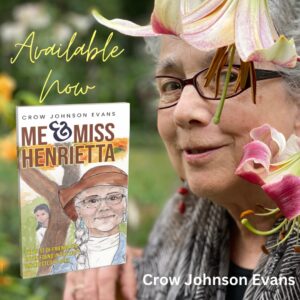INTERVIEW: Madison Wood
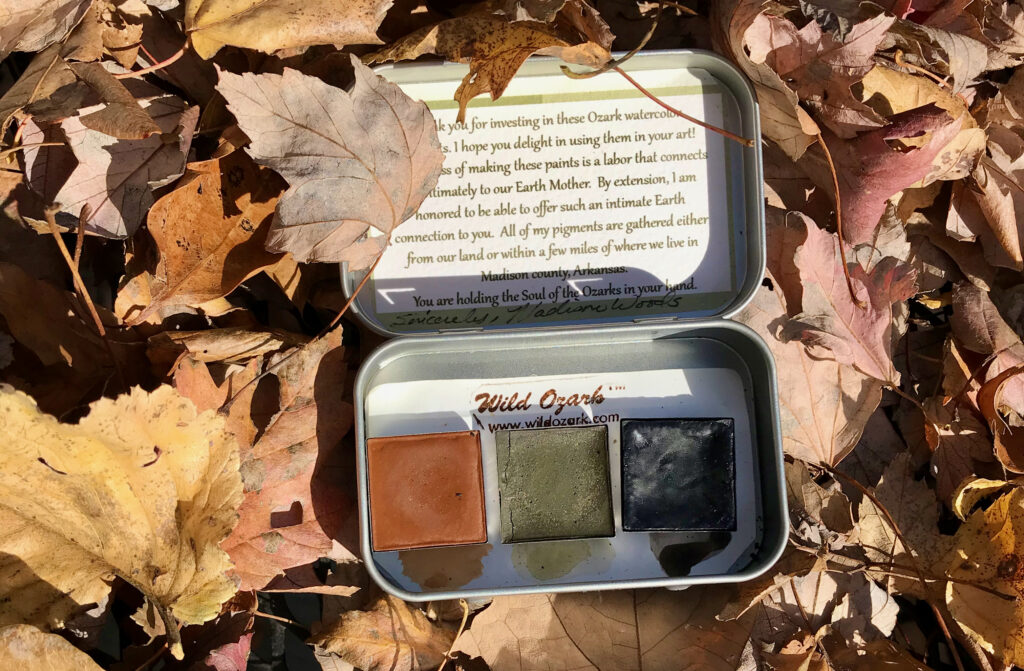
Crow: When I heard that you are crushing rocks and making your own pigments, my mouth dropped open. What could be more representative of the here and now—the images and materials come from your home space. I respect your privacy. Will you describe your home life, nature, and inspirations.. (to the extent you are comfortable revealing these)
Madison: Since I remarried in 2013, I’ve had the blessing of being able to be at home to bask in the wilderness that surrounds us. We live on 160 acres in a very rural off-road area of Madison county. My days consist of a routine beginning and end which includes feeding the horses. In the mornings I do a morning mile jog and walk which carries me down the driveway to the mailbox and back. On that route, I cross the creek twice and there’s ample opportunity to encounter lots of inspiration. I bring my phone so I can stop at the creek on the way back to gather pigments and take photos. Other than that, I am either writing articles for my website, gathering pigment rocks for paints, making paint, painting, or creating derivative works from finished paintings (note cards, prints, etc.). I do all of my own marketing, via the website, so keeping up with that can get time-consuming if I want to stay on top of SEO best practices as suggested by Google. Aside from the creative part of the business, Wild Ozark is also the only ginseng nursery in Arkansas. So I spend time in the woods every fall planting seeds and propagating companion plants. In spring, I pot up the seedlings and offer them for sale.
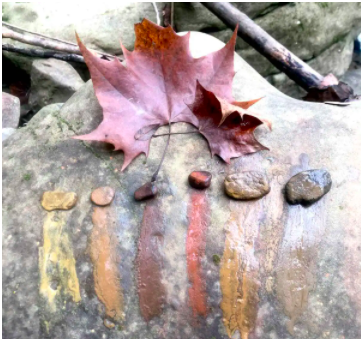
When I’m not working on the Wild Ozark business part of my life, (or scrolling now on Twitter- which is taking up FAR too much time lately) I am trying to manage the tasks around the house that always need tending. This morning I trimmed branches from the cedars by the horses’ gate, and tomorrow I may use the tractor to rake the driveway or go out with the truck to pick up a load of firewood to get ready for cooler weather. I’ve let the weeds go because I’m allergic to ragweed, so once they’re done with all that pollen, I’ll start weed-eating again. We don’t have enough flat areas to actually ‘mow’ anything, so it’s all done with weed eaters. My husband has been working overseas for most of our marriage, but that will end this December. I’ve been kinda ‘holding down the fort’ in his absence. Actively building our sustainable life will begin in 2021. We have a solar array to install and a monolithic dome to build. We might be a lot older than most people trying to do this, but better late than never! When he’s home, we cut up our own firewood and I help him with things like that. My creative schedule will get some adjustments, I’m sure, but I will continue to make the time to make paint and art.
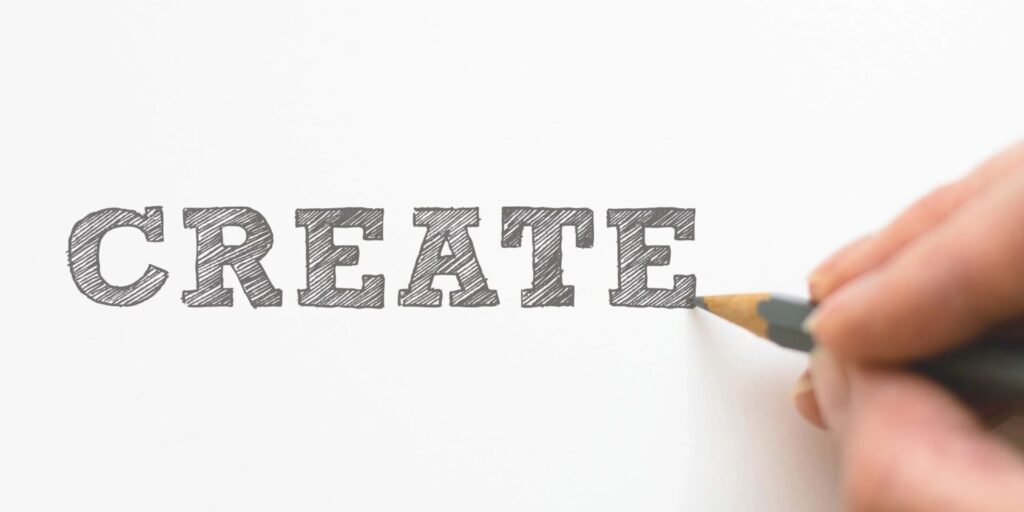
What you can do with a rock!
Crow: Where were you raised? City, Country, region? If you migrated to NW Arkansas, what brought you here.?
Madison: I was born in Topeka, Kansas on a USAF base, but raised for most of my life in south Louisiana where all of my family are from. It had been a lifelong dream of mine to live in the Rocky Mountains but settled in northwest Arkansas to stay within a day’s drive of family. My goal was to create a sustainable homestead life on our property, but that has been a much more difficult task to achieve than I thought it would be. My husband and I are just this year going to make significant progress towards that goal, but it took many years of working away from here to achieve it.
Crow: Your paintings of wildlife are wonderful. Have you studied or taught art? Have you used other creative expressions in different fields? Music? Sculpture?
Madison: Thank you. Wildlife and nature are what inspire pretty much everything about my life, and my art. I took some art lessons in grade school, but no professional classes. I did take piano lessons as a child, but the prospect of performing at a recital was enough to permanently end that endeavor, ha. For most of my life, I maintained that fear of public speaking or performing, but eventually set my mind to overcoming at least the public speaking fear. I have taught some workshops on making paints the way I do it, but not how to actually paint. The painting itself is still a mystery even to me. I don’t feel qualified to teach it.
Crow: What made you think you’d like to make your own paints?
Madison: I’d been noticing how many colorful sandstones got cracked on the driveway under the truck tires. Since we moved here, it made me curious but I didn’t actually act on that curiosity until the summer of 2018. My first thought wasn’t paint. I didn’t know what I wanted to do with it, but I wanted to see if the color from inside one of those cracked rocks would transfer onto paper. So I brought a sheet of paper outside, walked down the driveway, gathered up a pinch of the crumbs from one and rubbed it onto a sheet of drawing paper. When I saw that it actually made a spot of color as surely as if I had used a pastel, I became obsessed with learning how to use it somehow.
Crow: Have you found others across the world doing similar work and experimentation?
Madison: Oh yes. There’s a whole community of us out there on Instagram, sharing and brainstorming with each other. Anyone interested in that can follow the hashtags #handmadewatercolors or #earthpigments and make connections.
Crow: How long have you been crushing or grinding? Does it require special equipment?
Madison: I started crushing rocks in June 2018. Right now I’m still using larger rocks to break the pigment rocks into smaller pieces, and then a mortar and pestle to grind them into a powder. However, for my birthday/Christmas gift, my husband bought me a prospector’s crusher. So I’m eager to get that set up and see if it helps with the breaking. I’ll still have to grind them in the mortar/pestle to get the finer paints, but it ought to eliminate a lot of the muscle earlier in the process.
Crow: What propels you?
Madison: Curiosity is probably the biggest driver. Of course, there’s a strong love of nature, and an urge to share what I create.
Crow: Are there other techniques you look forward to exploring?
Madison: Yes, as soon as I have more room I want to make oil paints from these Ozark pigments, and learn to paint with them that way, too.
Crow: How can people see your work?
Madison: I have online galleries at www.PaleoPaints.com. Every year I start a new one, so if you want to see the first paintings, go to www.PaleoPaints.com/2018-gallery/. The links to later years are there, too. If someone wants to see a painting in real life before deciding on a purchase, I am always happy to schedule an appointment to bring it anywhere in northwest Arkansas. In fact, I’m happy to conduct an impromptu exhibit and bring them all out!
Crow: Do you have any highest and lowest moments in your life that you would share? And how did you find your way?
Madison: I think my lowest point(s) were at the point of realization that I didn’t want to continue my previous two marriages, and I couldn’t see a way forward and have happiness at the same time. Knowingly hurting someone is the hardest thing on earth for me to do. Ending a marriage is a tremendously difficult decision to make, but in each case, I still think it was the right thing to do, for me.
My method of dealing with life’s curveballs may be a little odd… I talk to the Universe a lot and make conscious connections to the “future me” I want to become.
That “future me” exists in the same time/space as current me, and is one of every single possible iteration that exists – all iterations exist, but I want to manifest the one that embodies the following: She is a successful, ‘able’ me, living a life that fulfills my purpose. She has a happy home, happy, healthy, and successfully able grown children, and grandchildren all staying true to the path to their own life purposes. That’s really what I want all wrapped up in a nutshell. At the end of every day, I want to know that I made the best choices I could with whatever information I had at the time. How I actually actualize that ‘future me’ isn’t the most important thing to me. While doing my art feels very important, and my love for nature and being creative is a basic part of who I am, the end goal is to reach the end of my life happy about where I am. And so I guess you could say that I’m living my present life while focusing on the end goal. I’m not attached to the specifics of how it gets done, but am staying as fully conscious as I can in the present moments so I can recognize the path.
What helps me find my way is taking the time to talk to the Universe (which is my way of relating to ‘God’). The realization that every possible future configuration exists at every present moment is the key. Actions can only take place in the now, and the choices and connections I make now influence which iteration of ‘future me’ is manifested. So I make a point to forge that connection to the iteration of me I have chosen to connect with, knowing that ‘future version of me’ exists on the here and now time continuum at the same time and place as the ‘present me’.
It’s kind of hard to explain, and I’m not sure I’ve made any sense of it. Some people want to manifest certain things or situations they think will make them happy. I am manifesting a certain state of being instead, and the things I have or the things I do aren’t the highest priority. The connection is.
Crow: You might add a book to your life dance. Many of us would enjoy hearing more of your philosophy. It’s inspiring.
Do you have a favorite recipe?
I do have a favorite dish and it is something I haven’t eaten in decades. Crawfish bisque. I do know how to make it, but don’t have a recipe. I go about cooking in the same way I go about making almost anything else creative – intuitively, with some guidelines. After gathering the ingredients, I just start adding them together and doing the things that need to be done for each step. Along the way, while making it, I’ll smell and taste it to see if it’s right. To make the bisque, you need some boiled, peeled, and de-veined crawfish tails, green onions, bread crumbs, eggs. Use a sausage grinder or processor to make a mush out of the tails. Mix the other ingredients in to make a sort of dough, much the same as a meatloaf mix. This is the ‘bisque’. Then you’ll need crawfish heads cleaned out and washed so that you just have a shell that makes a sort of oblong ‘cup’. Stuff the heads with this bisque. Then make a crawfish stew (the stew is a different recipe) and add the stuffed heads to the gravy and cook until the egg in the mixture is done. This is a very labor-intensive dish but omg it is the most delicious thing I’ve ever eaten. I learned how to make it at the after-funeral meal when one of my cousins in south Louisiana died a long time ago. I haven’t made it since moving up here to Arkansas because crawfish are not so easy to come by or are expensive. We could buy them live by the sack down-home and crawfish boils were common.
Crow: Thank you so much, Madison, for sharing your thoughts, history, and dreams with us. I look forward to using your pigments for painting!
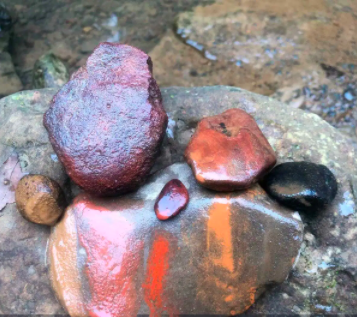
Just look at them, friends. Aren’t they beautiful? I’ll be sure to post the painting when it’s done.
